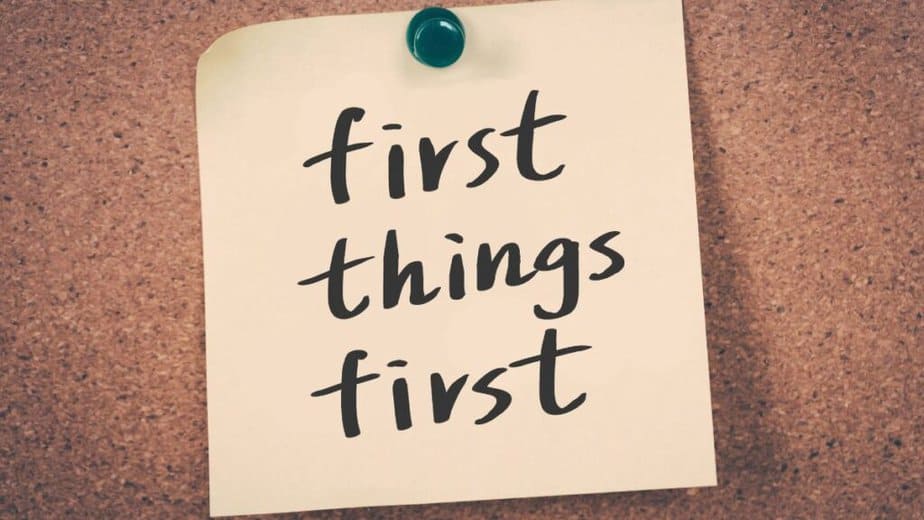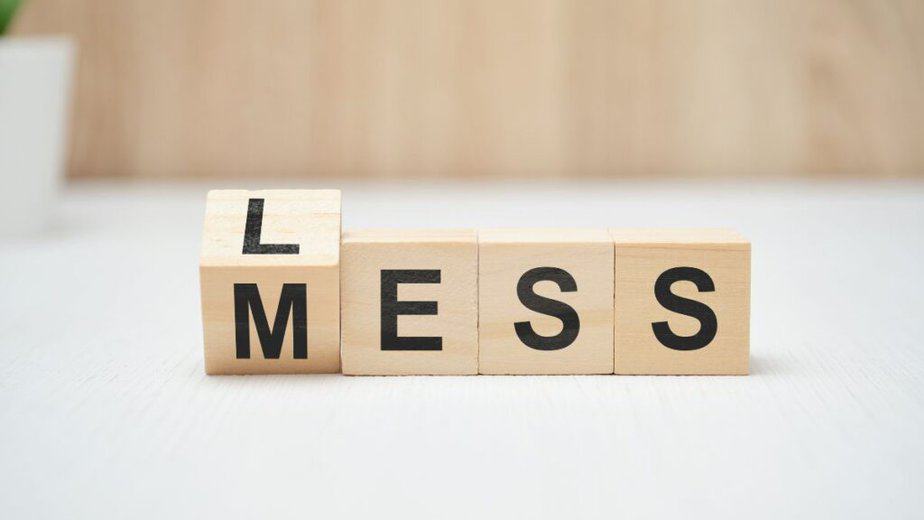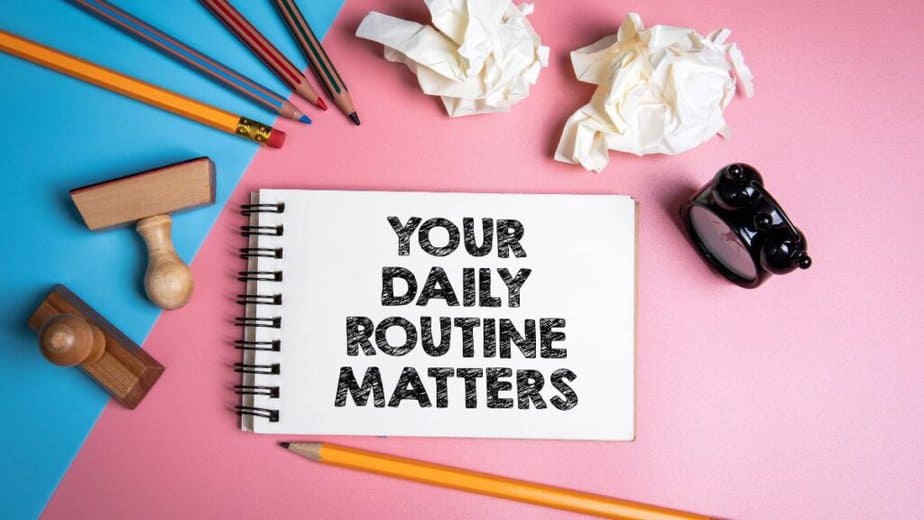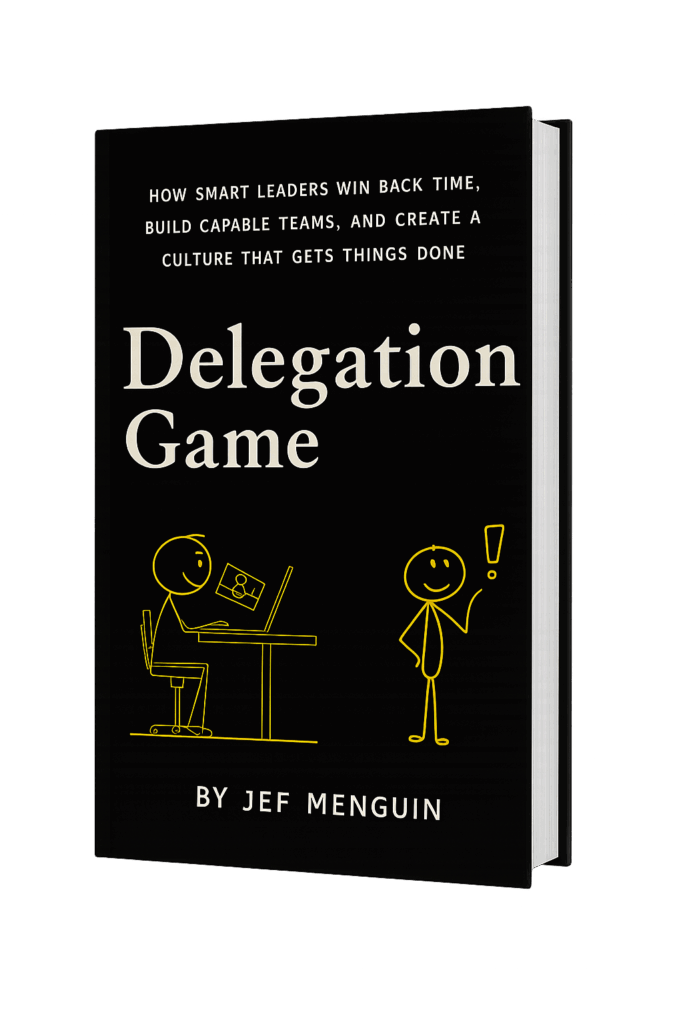First things first. It’s a phrase we’ve all heard, but do we understand its power? In a world where our to-do lists are endless and our calendars are packed, prioritizing becomes essential for making a real impact.
Time, energy, and attention are not just limited; they’re precious. We’re bombarded daily with tasks, all vying for our focus. But not everything matters equally.
In this article, we’ll explore the art of zeroing in on what truly counts.
But pause for a while. What are the five tasks you ought to do today? Write your answer.
We complicate things.
We live in a world of complicators. Prioritizing first things first isn’t easy. 1 We often fall prey to a common, yet flawed, way of thinking. We’re told to multi-task2, to juggle as many balls as possible, hoping we won’t drop any.
This conventional advice tells us that the more we do, the more successful we’ll be. The conventional advice isn’t always right. It’s a mindset that leads to complexity, frustration, and, ironically, unproductivity.
It is not your fault if you are a complicator too. We live in a society that glorifies busyness. Being overloaded is often seen as a badge of honor. This constant push to do more, to be everywhere, and to have a hand in everything is overwhelming.
And the result? We spread ourselves too thin. We fear of missing out and losing sight of what truly matters.
If you haven’t already, consider diving into Simplify to Magnify; it’s a must-read. Once you’ve absorbed its wisdom, you’ll appreciate Focus Forward even more, as it’s fantastic for crafting meaningful goals. First Things First helps you formulate meaningful goals and instills the mindset needed for successful goal execution.
What is First Things First?
First thing first means identifying and doing the number one thing—the first thing—before all else. When you embrace this concept, you will gain clarity in chaos. You will find the linchpin task that holds everything else together.
Focus on the most important task so you can simplify your thinking and amplify your results. You choose to work hard on what matters. Working hard on the unnecessary is a waste of time. Make each day count by making the most important task count first.
Turn a new leaf.
Learn the art of ‘First Things First.’3 Do only what’s essential. Break free from the conventional clutter and focus on what will make the biggest difference in your life and work.
‘First Things First’ is your antidote to the complexity and chaos of modern-day productivity myths.
The One Thing
In his book ‘The One Thing‘, Gary Keller shares a simple yet powerful idea: when you concentrate on that one most important task, everything else becomes easier or unnecessary.
This principle is a game-changer. Let’s break down the core of Keller’s message.
Find that one thing – the most impactful task that will make a real difference. This isn’t just about doing less; it’s about doing what’s absolutely vital. When you zero in on that one critical task, you channel your efforts in a way that amplifies results.
It’s not just a matter of selecting something to do; it’s about choosing the right thing – the one thing that will propel you forward in leaps, not just steps.
Narrowing your focus to this degree might seem counterintuitive in a world that constantly asks us to do more, and to be everywhere. But here’s the beauty of first things first: by focusing narrowly, you achieve broader success.
It’s like using a magnifying glass to focus sunlight. When the rays converge at one point, they have the power to start a fire. Similarly, when you focus your energy on one pivotal task, the impact of your efforts multiplies.
Embracing the One Thing means moving away from scattered efforts and toward a more purposeful path. It’s about finding your leverage point – that one thing that, once accomplished, will change everything else for the better.
This is how we begin to untangle ourselves from the web of everyday tasks and start moving toward real, tangible progress.

How to Identify Your ‘First Thing’
How do you spot your ‘first thing’?
Let’s start with a couple of techniques to help you sift through the noise: the Pareto principle and the Eisenhower Matrix.
The Pareto principle, or the 80/20 rule, suggests that 80% of your results come from 20% of your efforts. Apply this to your task list. Ask yourself, “Which 20% of my tasks are going to produce 80% of my results and impact?” This approach helps you to identify tasks that yield the most significant outcomes.
Then, there’s the Eisenhower Matrix. It’s a simple box divided into four quadrants to help you categorize tasks based on urgency and importance. Things that are important and urgent go in one box; important but not urgent in another. The trick is to focus on the important, not just the urgent. This method helps you differentiate between what demands your immediate attention and what truly aligns with your long-term goals.
But these techniques are just starting points.
The key is to align your ‘first thing’ with your personal and professional goals. Connect the dots between what you do and where you want to be.
For example, if you’re a writer, your ‘first thing’ might be writing a certain number of words each day because that directly contributes to your goal of finishing a manuscript. If you’re a teacher, it might be preparing an innovative lesson plan that enhances student engagement.
Identifying your ‘first thing’ is an exercise in clarity. You look at your list of tasks and ask, “Which of these is going to take me closer to my goals?” It’s not about being busy; it’s about being strategic. When you focus on the right things, you start to cut through the clutter, making each effort more intentional, more impactful. This is how you turn priorities into progress, and goals into achievements.
I teach people both the Pareto Principle and the Eisenhower Matrix because they are easy to understand. Once you get used to do the Pareto Principle, Eisenhower Matrix becomes easy. And since Pareto is fractal, I use a version I call 4% Solution.
Another favorite tool that I use these days is Dan Sullivan’s ABC Model. Once you get it, you will find yourself embracing the 4% Solution without even thinking of it. Let me tell you a bit about it.
Practical ‘First Thing First” Strategies
Adopting the ‘First Thing First’ approach is about making a conscious shift in how you manage your day. It’s a skill that can be honed with practice and discipline.
Here are some practical strategies to help you embed this approach into your daily life:
Start with a Clear Goal. Define what success looks like for you. What is the one thing that, if achieved, would make the most significant difference in your life or work? Keep this goal in mind as you plan your day.
Focus Forward: Crafting Meaningful Goals
Identify Your ‘First Thing’. Each morning, or the night before, identify the ‘first thing’ for the day. Use the ABC Model or the Eisenhower Matrix to find the task that will have the most impact and align it with what brings you energy and motivation.
Time Blocking. Allocate specific time slots for your ‘first thing.’ Protect this time fiercely; it’s your golden hour (or hours). Avoid scheduling meetings or other commitments during this time. Treat it as a non-negotiable appointment with your most important task.
Minimize Distractions: Create an environment that supports focus. This might mean turning off notifications, finding a quiet space, or informing others of your focused work time. Eliminate or minimize anything that can pull you away from your ‘first thing.’
Build a Routine. Make prioritizing your ‘first thing’ a daily habit. Consistency is key. The more you practice this approach, the more natural it becomes. Aim to make it a part of your daily routine, just like brushing your teeth.
Rhythm of Routine: Structuring Your Day for Impact
Reflect and Adjust. At the end of each day or week, reflect on how well you focused on your ‘first thing.’ Did you give it the time and energy it deserved? If not, what can you adjust for the next day or week?
Celebrate Small Wins. Recognize and celebrate when you successfully prioritize and accomplish your ‘first thing.’ This reinforces the behavior and motivates you to continue.
Seek Feedback and Learn. Don’t hesitate to ask for feedback from peers or mentors about how you are managing your priorities. Sometimes, an external perspective can provide insights into how you can improve.
Prioritizing your ‘first thing’ is not about getting everything done; it’s about getting the most important things done. It requires discipline and consistency, but the rewards are immense. You’ll find that by concentrating your efforts on what truly matters, you’ll achieve more and feel a greater sense of accomplishment and fulfillment.
Overcoming Challenges in Prioritizing
Even with the best intentions, prioritizing your ‘first thing’ can be challenging. Distractions, over-commitment, and indecision are common hurdles. But there are ways to overcome these obstacles and keep your focus laser-sharp.
Tackling Distractions. In our always-connected world, distractions are everywhere. Create a distraction-free zone during your ‘first thing’ time. Turn off notifications, put your phone away, and let others know you are in a focus session. If you find your mind wandering, gently bring your attention back to the task at hand.
Dealing with Overcommitment. It’s easy to overcommit, especially when you want to do it all. However, remember that saying yes to everything often means saying no to your most important work. Regularly review your commitments and ask yourself if they align with your goals. If they don’t, it might be time to let them go.
Cutting Through Indecision. Indecision can be a major time-waster. Simplify decision-making by setting clear criteria for what you say yes to. When in doubt, refer back to your main goal and ask if the task or decision at hand gets you closer to it.
The Power of ‘No’. Learning to say ‘no’ is crucial in prioritizing your ‘first thing.’ It’s not about being rude; it’s about respecting your time and goals. When you’re asked to take on something that doesn’t align with your ‘first thing,’ politely decline. Remember, every time you say no to something non-essential, you’re saying yes to your priorities.
Setting Boundaries. Boundaries are vital for effective prioritization. This includes setting boundaries with others (letting them know when you’re not available) and with yourself (limiting the time spent on less critical tasks). Boundaries help you protect your time and focus.
Staying on Track. Regular check-ins with yourself can help you stay on track. At the end of each day, ask yourself if you prioritized your ‘first thing’ and what you can do better tomorrow. Use tools like planners or digital apps to keep your priorities in view.
Flexibility. While it’s important to stick to your priorities, also be flexible enough to adapt to unforeseen circumstances. Sometimes, your ‘first thing’ might need to change due to external factors. Be adaptable, but always with an eye on your main goals.
Overcoming these challenges is about building a set of habits that support your focus on the ‘first thing.’ It’s a mix of discipline, self-awareness, and the willingness to make tough choices. But once you get the hang of it, you’ll find that prioritizing becomes second nature, leading you to more productive and fulfilling days.
The Ripple Effect of Prioritizing
When you throw a stone into a pond, it creates ripples that spread far beyond the initial splash. Focusing on your ‘first thing’ works in much the same way. By zeroing in on your most crucial task, you create a ripple effect that enhances every other area of your life and work.
Let’s talk about how this happens.
When you dedicate yourself to your most important task, you do it well – better than if you were juggling ten things at once. This quality of work doesn’t just stay confined to that one task; it sets a standard for everything you do. It’s about doing one thing so well that it lifts up everything else.
Now, think about the compounded benefits over time. Each day that you focus on your ‘first thing,’ you are building yourself. You become the person who consciously creates wealth, gain wisdom, maintains health, and bring joy wherever you go. This isn’t just about daily wins; it’s about creating a legacy of success and fulfillment.
The ripple effect of focusing on your ‘first thing’ is profound. It’s about creating a positive cycle where one good decision builds on another. And as these decisions accumulate, they transform not just your task list, but your entire approach to work and life.
This is the power of prioritizing: it’s not just about the task at hand; it’s about setting off a chain reaction of success and satisfaction that echoes far beyond the initial effort.
Do First Things First
The power of prioritizing our most important task is more than just managing our to-do lists. It’s about embracing simplicity to magnify impact. It’s a mindset shift, a way of seeing and doing that transforms not just how we work, but how we live.
Identify that pivotal ‘first thing’ and give it the focus it deserves. Cut through the clutter of the every day, hone in on what truly matters, and tackle it with all your energy and passion. When you do this, you’re not just ticking off a task; you’re setting in motion a ripple effect that elevates everything you do.
As we move forward, let’s carry with us the lessons of prioritizing, simplifying, and focusing. Let’s remember the stories of those who have walked this path and seen the profound impact it can have. And let’s encourage each other to continually seek out our ‘first thing,’ to make each day count, and to find joy and fulfillment in the process.
‘First Things First’ isn’t just a method; it’s a mantra, a guiding principle that can lead us to greater effectiveness, satisfaction, and success.
Next: Clear Space, Clear Mind
Footnotes:
- Prioritizing “first things first” is hard because it requires distinguishing what’s truly important from urgent but less important tasks. This distinction is often blurred by immediate demands and distractions, making it difficult to focus on long-term goals and priorities. ↩︎
- Linda Stone’s study on continuous partial attention describes how people multitask by paying a bit of attention to several things at once, instead of focusing fully on one task. This behavior is driven by a desire to not miss anything important happening around us, but it can lead to stress and reduced productivity because our attention is always divided. ↩︎
- The phrase “first things first” emphasizes prioritizing the most important tasks before others. Its origins trace back to a 14th-century poem by Geoffrey Chaucer, “Parlement of Foules,” where it’s used to highlight the importance of proper sequencing in tasks. Over time, it evolved into a common saying to stress the importance of prioritizing. ↩︎






